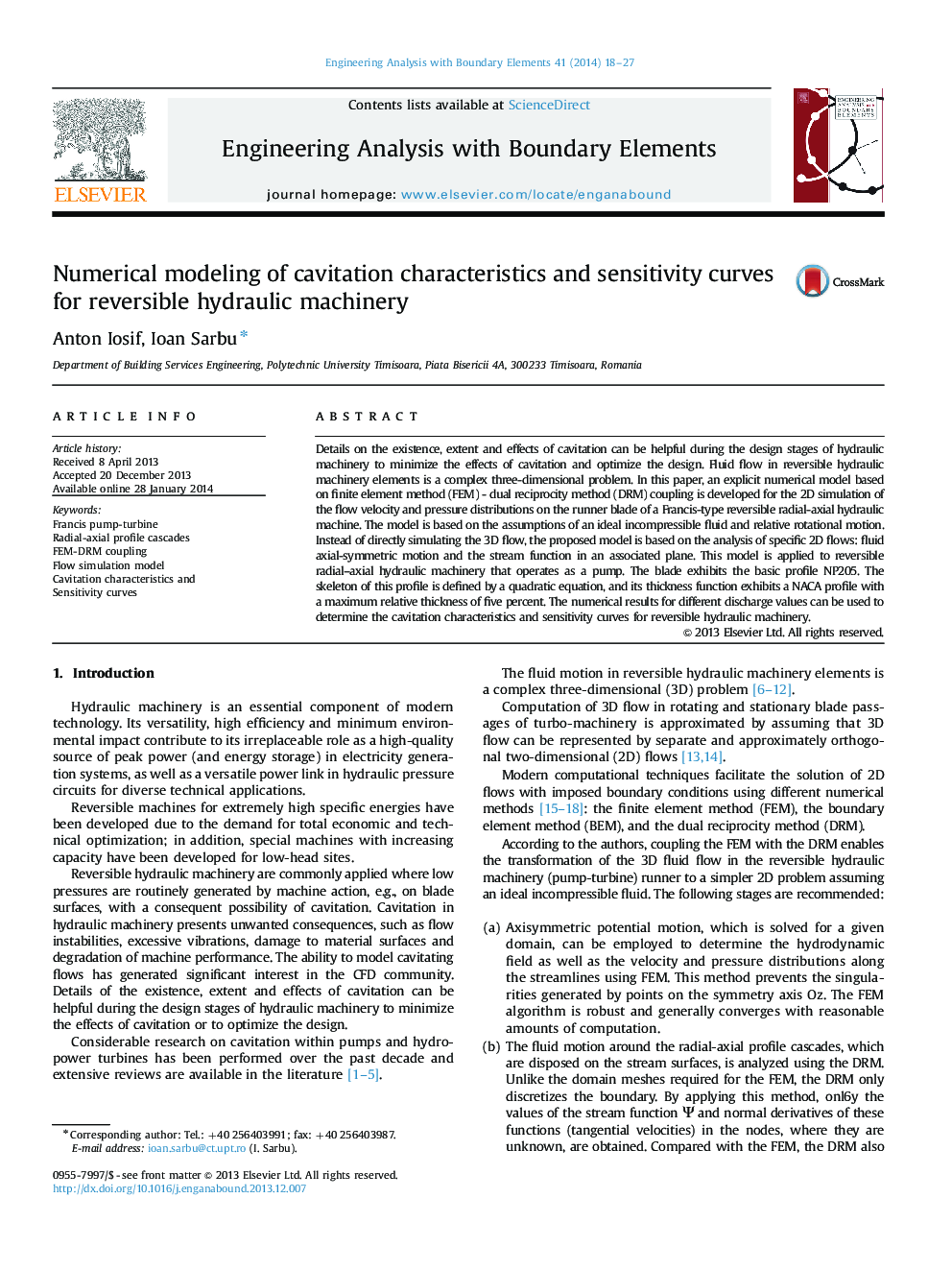| Article ID | Journal | Published Year | Pages | File Type |
|---|---|---|---|---|
| 512601 | Engineering Analysis with Boundary Elements | 2014 | 10 Pages |
Details on the existence, extent and effects of cavitation can be helpful during the design stages of hydraulic machinery to minimize the effects of cavitation and optimize the design. Fluid flow in reversible hydraulic machinery elements is a complex three-dimensional problem. In this paper, an explicit numerical model based on finite element method (FEM) - dual reciprocity method (DRM) coupling is developed for the 2D simulation of the flow velocity and pressure distributions on the runner blade of a Francis-type reversible radial-axial hydraulic machine. The model is based on the assumptions of an ideal incompressible fluid and relative rotational motion. Instead of directly simulating the 3D flow, the proposed model is based on the analysis of specific 2D flows: fluid axial-symmetric motion and the stream function in an associated plane. This model is applied to reversible radial–axial hydraulic machinery that operates as a pump. The blade exhibits the basic profile NP205. The skeleton of this profile is defined by a quadratic equation, and its thickness function exhibits a NACA profile with a maximum relative thickness of five percent. The numerical results for different discharge values can be used to determine the cavitation characteristics and sensitivity curves for reversible hydraulic machinery.
